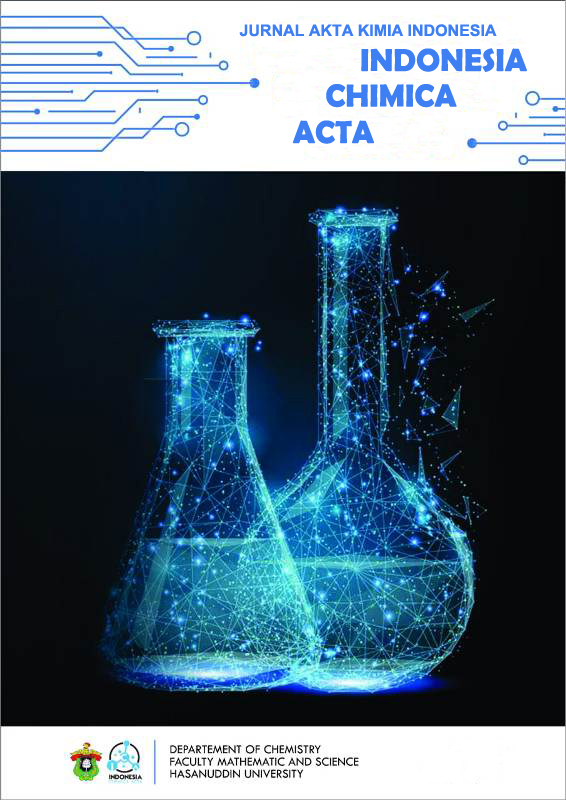Main Article Content
Abstract
Keywords
Article Details
References
- Gelse KP, Aigner T. Collagens—Structure, Function, and Biosynthesis. Adv Drug Deliv Rev 2003; 55: 1531–1546.
- Duarte AS, Correia A, Esteves AC. Bacterial collagenases – A review. Crit Rev Microbiol 2016; 42(1): 106-126.
- Shoulders MD, Raines RT. Collagen Structure and Stability. Annu Rev Biochem 2009; 78: 929-958.
- Silva TF, Penna ALB, Colágeno: Características Químicas E Propriedades Funcionais. Rev Inst Adolfo Lutz 2012; 71(3): 530-539.
- Silvipriya KS, Kumar KK, Bhat AR, Kumar D, John A, Lakshmanan P. Collagen: Animal Sources and Biomedical Application. J Appl Pharm Sci 2015; 5(03): 123-127.
- Lee CH, Singla A, Lee Y. Review Biomedical Applications of Collagen. Int J Pharm 2001; 221: 1-22.
- Muthukumar T, Sreekumar G, Sastry TP, Chamundeeswari M. Collagen as A Potential Biomaterial in Biomedical Applications. Rev Adv Mater Sci 2018; 53: 29-39.
- Han SH, Uzawa Y, Moriyama T, Kawamura Y. Effect of Collagen and Collagen Peptides from Bluefin Tuna Abdominal Skin on Cancer Cells. Health 2011; 3(3): 129-134.
- Baehaki A, Nopianti R, Anggraeni S. Antioxidant Activity of Skin and Bone Collagen Hydrolyzed from Striped Catfish (Pangasius pangasius) with papain enzyme. J Chem Pharm Res 2015; 7(11): 131-135.
- Silva MH, Silva JM, Marques ALP, Domingues A, Bayon Y, Reis RL. (Review) Marine Origin Collagens and Its Potential Applications. Mar Drugs 2014; 12: 5881-5901
- Schmidt MM, Dornelles RCP, Mello RO, et al, Collagen Extraction Process. IFRJ 2016; 23(3): 913-922.
- Liu H, Huang K. Structural Characteristics of Extracted Collagen from Tilapia (Oreochromis mossambicus) Bone: Effects of Ethylenediaminetetraacetic Acid Solution and Hydrochloric Acid Treatment. Int J F Prop 2016; 19(1): 63-75.
- Kittiphattanabawon P, Benjakul B, Visessanguan W, Nagai T, Tanaka M. Characterisation of acid-soluble collagen from skin and bone of bigeye snapper (Priacanthus tayenus). Food Chem 2005; 89: 363–372.
- Nagai T, Suzuki N. Isolation of Collagen from Fish Waste Material -Skin, Bone and Fins. Food Chem 2000; 68: 277-281.
- Baehaki A, Lestari SD, Desliani I. Collagen Hydrolysis from Skin and Bone of Pangasius Catfish Prepared by Bromelain Enzyme and Antioxidant Activity of Hydrolysate. Der Pharma Chemica 2016; 8(4): 155-158.
- Veeruraj A, Arumugam M, Balasubramanian T. Isolation and Characterization of Thermostable Collagen from The Marine Eel-Fish (Evenchelys macrura). Process Biochem 2013; 48: 1592–1602.
- Tziveleka LA, Ioannou E, Tsiourvas D, Berillis P, Foufa E, Roussis V. Collagen from The Marine Sponges Axinella cannabina and Suberites carnosus: Isolation and Morphological, Biochemical, and Biophysical Characterization. Mar Drugs 2017; 15(152): 1-17.
- Hamidi MR, Jovanova B, Panovska TK. Toxicоlogical Evaluation of The Plant Products Using Brine Shrimp (Artemia salina L.) Model. Maced pharm bull 2014; 60 (1): 9-18.
References
Gelse KP, Aigner T. Collagens—Structure, Function, and Biosynthesis. Adv Drug Deliv Rev 2003; 55: 1531–1546.
Duarte AS, Correia A, Esteves AC. Bacterial collagenases – A review. Crit Rev Microbiol 2016; 42(1): 106-126.
Shoulders MD, Raines RT. Collagen Structure and Stability. Annu Rev Biochem 2009; 78: 929-958.
Silva TF, Penna ALB, Colágeno: Características Químicas E Propriedades Funcionais. Rev Inst Adolfo Lutz 2012; 71(3): 530-539.
Silvipriya KS, Kumar KK, Bhat AR, Kumar D, John A, Lakshmanan P. Collagen: Animal Sources and Biomedical Application. J Appl Pharm Sci 2015; 5(03): 123-127.
Lee CH, Singla A, Lee Y. Review Biomedical Applications of Collagen. Int J Pharm 2001; 221: 1-22.
Muthukumar T, Sreekumar G, Sastry TP, Chamundeeswari M. Collagen as A Potential Biomaterial in Biomedical Applications. Rev Adv Mater Sci 2018; 53: 29-39.
Han SH, Uzawa Y, Moriyama T, Kawamura Y. Effect of Collagen and Collagen Peptides from Bluefin Tuna Abdominal Skin on Cancer Cells. Health 2011; 3(3): 129-134.
Baehaki A, Nopianti R, Anggraeni S. Antioxidant Activity of Skin and Bone Collagen Hydrolyzed from Striped Catfish (Pangasius pangasius) with papain enzyme. J Chem Pharm Res 2015; 7(11): 131-135.
Silva MH, Silva JM, Marques ALP, Domingues A, Bayon Y, Reis RL. (Review) Marine Origin Collagens and Its Potential Applications. Mar Drugs 2014; 12: 5881-5901
Schmidt MM, Dornelles RCP, Mello RO, et al, Collagen Extraction Process. IFRJ 2016; 23(3): 913-922.
Liu H, Huang K. Structural Characteristics of Extracted Collagen from Tilapia (Oreochromis mossambicus) Bone: Effects of Ethylenediaminetetraacetic Acid Solution and Hydrochloric Acid Treatment. Int J F Prop 2016; 19(1): 63-75.
Kittiphattanabawon P, Benjakul B, Visessanguan W, Nagai T, Tanaka M. Characterisation of acid-soluble collagen from skin and bone of bigeye snapper (Priacanthus tayenus). Food Chem 2005; 89: 363–372.
Nagai T, Suzuki N. Isolation of Collagen from Fish Waste Material -Skin, Bone and Fins. Food Chem 2000; 68: 277-281.
Baehaki A, Lestari SD, Desliani I. Collagen Hydrolysis from Skin and Bone of Pangasius Catfish Prepared by Bromelain Enzyme and Antioxidant Activity of Hydrolysate. Der Pharma Chemica 2016; 8(4): 155-158.
Veeruraj A, Arumugam M, Balasubramanian T. Isolation and Characterization of Thermostable Collagen from The Marine Eel-Fish (Evenchelys macrura). Process Biochem 2013; 48: 1592–1602.
Tziveleka LA, Ioannou E, Tsiourvas D, Berillis P, Foufa E, Roussis V. Collagen from The Marine Sponges Axinella cannabina and Suberites carnosus: Isolation and Morphological, Biochemical, and Biophysical Characterization. Mar Drugs 2017; 15(152): 1-17.
Hamidi MR, Jovanova B, Panovska TK. Toxicоlogical Evaluation of The Plant Products Using Brine Shrimp (Artemia salina L.) Model. Maced pharm bull 2014; 60 (1): 9-18.
